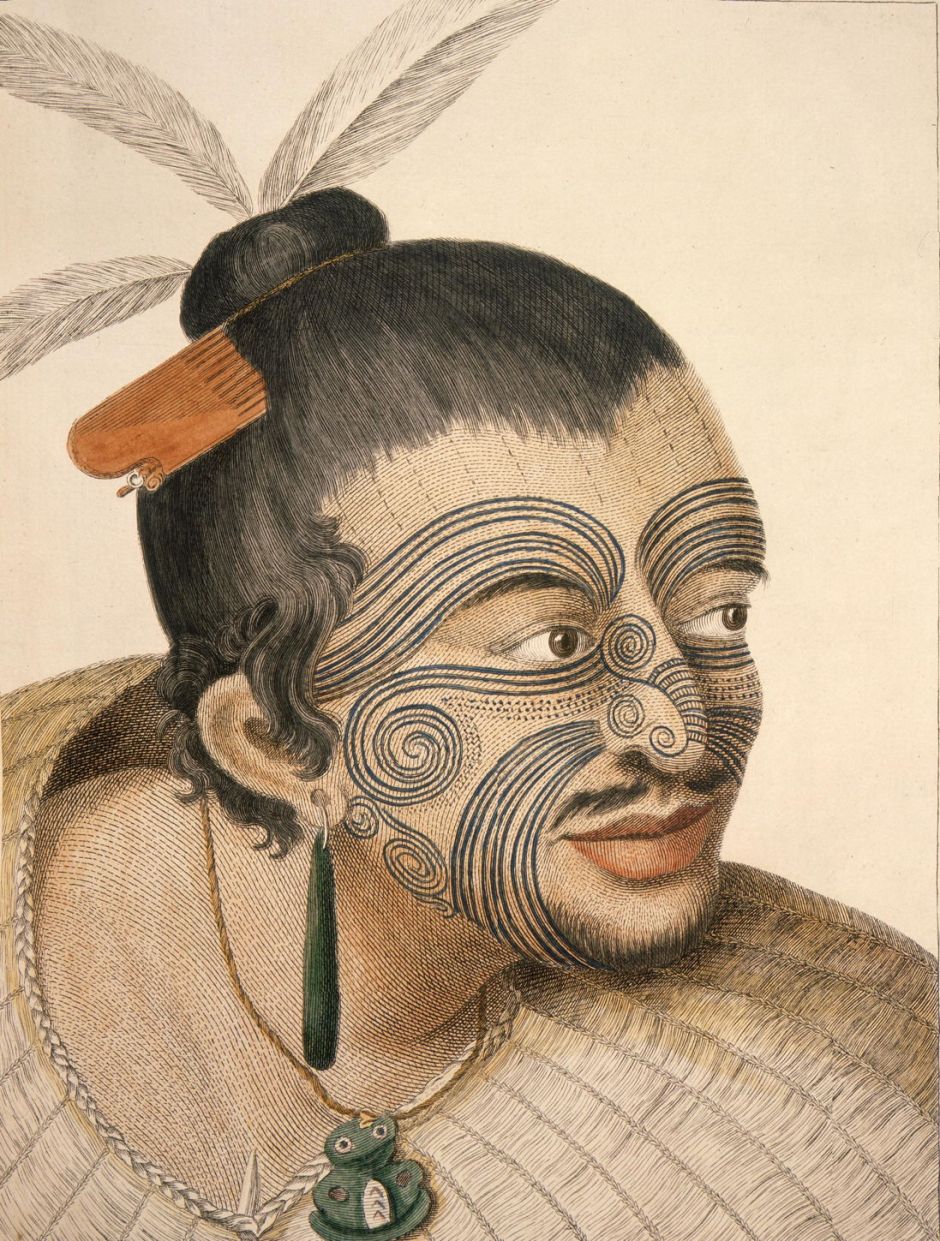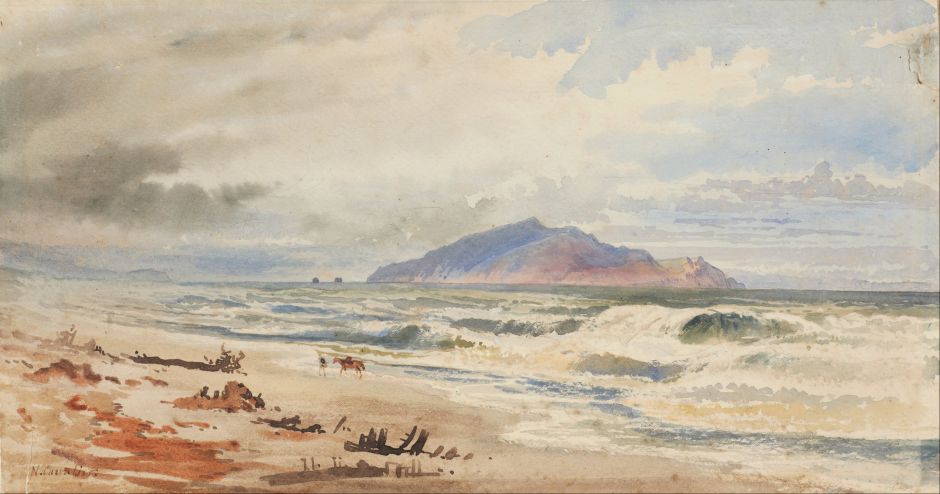It may be midwinter here in the northern latitudes, but if you’ve got any sense you’ll have fled the long nights, cold weather and high energy prices to spend these months in New Zealand’s summer. As European artists didn’t start painting New Zealand until James Cook’s expedition of 1769, it has one of the briefest histories of landscape painting, which I’ll try to exemplify in this article and tomorrow’s sequel.
First paintings were made by Sydney Parkinson, Cook’s official artist, who died at sea of dysentery before the expedition had returned to England in 1771.

Parkinson’s Māori Man (1769) is described as showing “a Māori man, his hair in a tikitiki topknot with feathers and a bone comb, full facial moko, a greenstone earring, a tiki and a flax cloak”. A magnificent portrait, it shows one of the indigenous people who is believed to have visited HMS Endeavour when she was off Whareongaonga, Gisborne, New Zealand.

A New Zealand Warrior in his Proper Dress & Compleatly Armed According to their Manner (1769) is described as showing a man “holding a tewhatewha in his outstretched left hand. He has a topknot hairstyle, and feathers in his hair, a fine dogskin cloak in a chequered pattern, a patu tucked into his belt and bone ornaments at his neck.”
For Cook’s second voyage in 1772-75, William Hodges (1744–1797) at least lived long enough to return.

A View in Dusky Bay, New Zealand (1773) is an unusual oil tondo version of one of Hodges’ favourite views, which he painted repeatedly. Cook had discovered this sound, now known as Tamatea, at the extreme south-western tip of South Island in 1770. During his second voyage, Cook used it as an anchorage and base in March and April 1773.
By the early nineteenth century, European settlement was developing rapidly. Later that century, one of the greatest botanical artists, Marianne North, visited to paint its plants.

North’s View of Lake Wakatipu, New Zealand (1880-82) shows this long inland lake in the south of South Island.

She also painted some composed floral still lifes, including this selection of New Zealand Flowers and Fruit from 1880-82.
In 1856 John Turnbull Thomson arrived in New Zealand, where he shortly became the Chief Surveyor of Otago. His first task there was to select the site and plan the layout of the new town of Invercargill, now one of the southernmost cities in the world.

His fine view over what’s now the city of Dunedin in 1856 show its early development from a whaling station in the 1830s. By the end of the 1850s, this quiet town had been swelled by around twelve thousand immigrants from Scotland.

For comparison, here is Ulrich Lange’s photographic view from Opoho to the City of Dunedin, as it was in about 2007.
Thomson then moved into the interior of New Zealand to map large areas of Southland, with the aid of local Maori guides. He explored the headwaters of the Tasman River, estimated the height of Mount Cook, and discovered and named Mount Aspiring in 1857. By 1876, he was so good at his job that he was appointed New Zealand’s first Surveyor General.
Painters came from far and wide to depict New Zealand’s remarkable scenery. In 1865, Nicholas Chevalier moved from Australia to New Zealand, where he travelled widely and painted many landscapes. Chevalier was Swiss by descent, born in Russia, trained in Germany, based for much of his life in Britain, and fell in love with New Zealand.

He became particularly enamoured with the strait separating the two main islands of New Zealand, the Cook Strait. In 1865, the ship City of Dunedin had sunk there with the loss of thirty-nine lives. His watercolour Near Paekakariki, Cook Strait, painted in 1868 shows a group of Maori boats hauled up in the dunes, as a few children play on the beach.

Kapiti (c 1868) is a fine and painterly watercolour of the coast to the north-east of Cook Strait with large breakers rolling in.
Tomorrow I’ll complete my account with paintings from the end of the nineteenth century.

